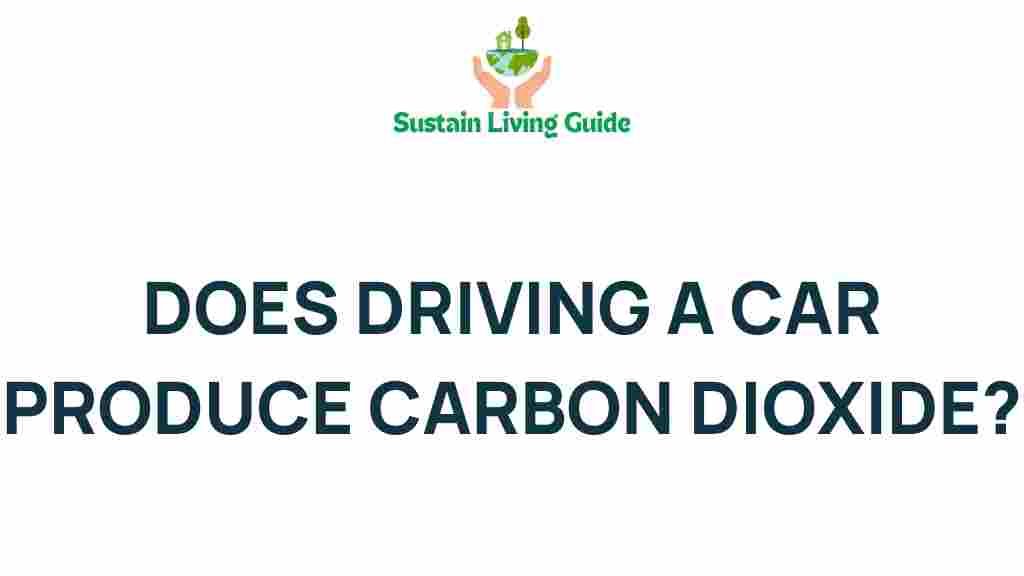The Hidden Carbon Footprint: Unpacking Car Emissions
In today’s world, the conversation around climate change has intensified, with a significant focus on reducing greenhouse gas emissions. Among the various sources of these emissions, car emissions play a pivotal role. Understanding the carbon footprint of vehicles is crucial for individuals and policymakers alike. This article dives deep into the realm of car emissions, examining their impact, the factors influencing them, and how we can mitigate their effects.
Understanding Car Emissions
Car emissions refer to the pollutants that vehicles release into the atmosphere as a result of burning fuel. These emissions include a variety of harmful substances, notably:
- Carbon Dioxide (CO2): The primary greenhouse gas emitted through human activities, especially from burning fossil fuels.
- Carbon Monoxide (CO): A toxic gas that is produced when fuel is incompletely burned.
- Nitrogen Oxides (NOx): A group of gases that contribute to smog and respiratory issues.
- Particulate Matter (PM): Tiny particles that can penetrate the lungs and affect cardiovascular health.
In 2020, the transportation sector accounted for nearly 29% of total greenhouse gas emissions in the United States, with a significant portion attributed to car emissions. This data underscores the critical importance of addressing the carbon footprint associated with our vehicles.
The Impact of Car Emissions
The impact of car emissions extends beyond the immediate environment. Here’s a look at the broader ramifications:
1. Environmental Consequences
Car emissions contribute to several environmental issues, including:
- Global Warming: The accumulation of greenhouse gases, particularly CO2, leads to increased global temperatures.
- Air Pollution: Emissions contribute to smog and poor air quality, adversely affecting human health and ecosystems.
- Acid Rain: NOx can lead to the formation of acid rain, which harms aquatic life and forest ecosystems.
2. Health Impacts
High levels of air pollution from car emissions can lead to serious health issues, such as:
- Respiratory diseases like asthma and bronchitis
- Cardiovascular problems
- Premature death in vulnerable populations
3. Economic Costs
The economic impact of car emissions is substantial. It encompasses:
- Healthcare costs related to pollution-induced illnesses
- Environmental remediation efforts
- Loss of productivity due to health issues
Factors Influencing Car Emissions
Several factors influence the level of car emissions, including:
1. Vehicle Type
The make and model of a vehicle significantly impact its emissions. For example:
- Gasoline vs. Diesel: Diesel engines generally produce more NOx and PM, while gasoline engines emit more CO2.
- Electric Vehicles (EVs): EVs have no tailpipe emissions, greatly reducing car emissions when powered by renewable energy.
2. Driving Behavior
How drivers operate their vehicles can also affect emissions:
- Rapid acceleration and hard braking increase fuel consumption and emissions.
- Excessive idling contributes to unnecessary emissions.
3. Maintenance and Upkeep
Well-maintained vehicles are generally more efficient. Factors including:
- Regular oil changes
- Proper tire inflation
- Timely engine tune-ups
These practices can help in reducing car emissions.
Step-by-Step Process to Reduce Car Emissions
Reducing car emissions is a collective effort that requires individual actions. Here’s a step-by-step guide:
Step 1: Choose the Right Vehicle
When purchasing a vehicle, consider:
- Fuel efficiency ratings
- Emissions standards set by environmental authorities
- Opting for hybrid or electric vehicles
Step 2: Maintain Your Vehicle Regularly
To ensure your vehicle runs efficiently:
- Schedule regular maintenance checks
- Replace air filters as needed
- Ensure that the exhaust system is functioning correctly
Step 3: Adopt Eco-Friendly Driving Habits
Minor changes in driving behavior can have a significant impact:
- Accelerate gently and maintain a steady speed.
- Avoid excessive idling and switch off the engine when parked.
- Combine trips to minimize driving distance.
Step 4: Utilize Public Transport and Carpooling
Reducing the number of vehicles on the road can drastically cut down car emissions. Consider:
- Using public transport whenever possible
- Carpooling with colleagues or friends
- Alternating driving days with others
Step 5: Support Sustainable Transport Initiatives
Engage with local and national policies that promote sustainable transport by:
- Advocating for better public transport systems
- Supporting infrastructure for cycling and walking
- Participating in community clean-up events
Troubleshooting Common Issues Related to Car Emissions
As you work to reduce car emissions, you may face several challenges. Here are some common issues and their solutions:
Issue 1: Vehicle Not Running Efficiently
If you notice that your vehicle is consuming more fuel than usual, it could be due to:
- Low tire pressure – Check and inflate tires to the recommended levels.
- Dirty air filters – Replace them to improve air intake.
- Engine issues – Get a diagnostic check to address any underlying problems.
Issue 2: Difficulty Changing Driving Habits
Changing established driving habits can be challenging. To overcome this:
- Set reminders to encourage eco-friendly driving.
- Track fuel consumption to see the benefits of your efforts.
- Join local driving groups focused on sustainability.
Issue 3: Limited Access to Public Transport
In some areas, public transport options may be limited. Consider:
- Exploring ride-sharing services.
- Forming a carpool group with neighbors.
- Using a bicycle for short distances.
Conclusion: The Path Forward
Car emissions are a significant contributor to climate change and environmental degradation. However, by understanding their impact and implementing practical strategies to reduce them, individuals can make a meaningful difference. From choosing the right vehicle to adopting sustainable driving habits, every action counts.
For more information on reducing your carbon footprint through transportation, check out relevant resources available at Environmental Protection Agency. By working together, we can pave the way for a cleaner, healthier planet for future generations.
Reducing car emissions is not just a personal choice; it is a collective responsibility. Let us embrace sustainable practices and contribute to a greener future.
This article is in the category Transportation and created by SustainLivingGuide Team

1 thought on “The Hidden Carbon Footprint: Unpacking Car Emissions and Their Impact”